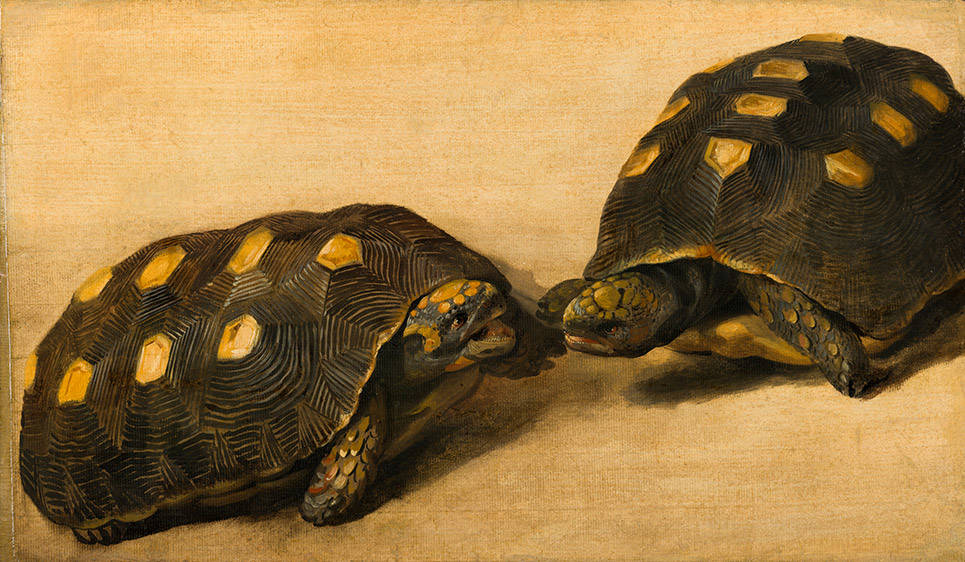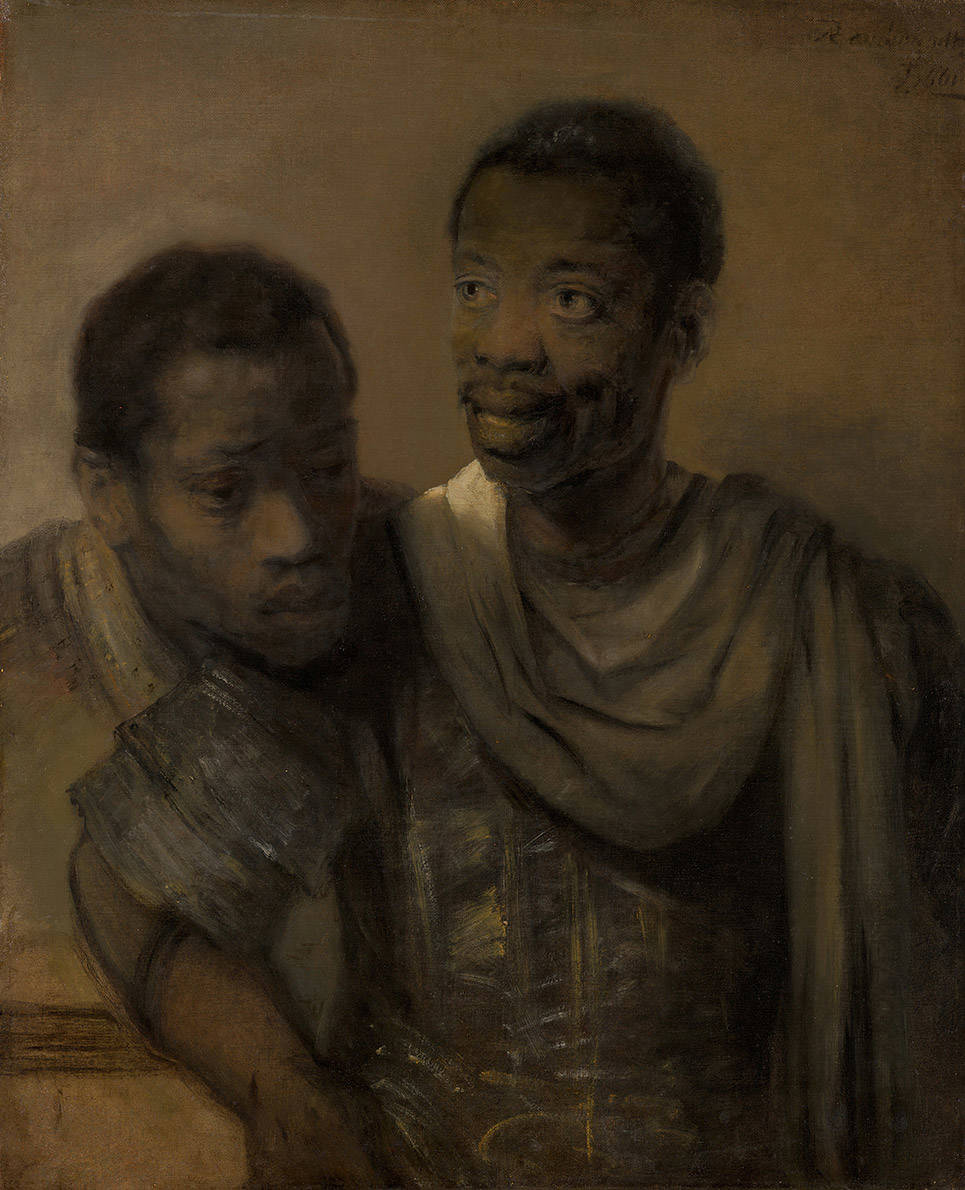About Shifting Image - In search of Johan Maurits

From 4 April through 7 July the Mauritshuis displays the exhibition Shifting Image - In search of Johan Maurits. The article below, featuring the exhibition, was published spring 2019 in Mauritshuis in Focus. Author Lea van der Vinde is curator of the exhibition.
The Mauritshuis
The Mauritshuis was named after the man who had it built, Johan Maurits, Count of Nassau-Siegen (1604–1679). It has been home to the Royal Cabinet of Paintings since 1822. King William I acquired the impressive portrait of Johan Maurits by Jan de Baen especially for the Mauritshuis. The count has played an important role in the museum in exhibitions and publications right from the beginning. In terms of art history, the museum has always emphasised his importance to art, architecture and science. But Johan Maurits’s life story is also part of Dutch colonial history, particularly its role in the trans-Atlantic slave trade.
Most of the Mauritshuis (1633–44) was built while its future occupant was away: in October 1636 Johan Maurits boarded a ship bound for Brazil to take up the position of Governor-General of the colony of ‘Nieuw Holland’ in the service of the West India Company (WIC). The colony was a coastal area in the northeast of Brazil that had been captured from the Portuguese. They had set up a lucrative sugar industry there, with sugar plantations and sugar mills reliant on the labour of enslaved Africans. ‘Dutch Brazil’ was the Republic’s first large plantation colony. At first, the Dutch regarded slavery as an ‘unchristian’ act perpetrated by their Catholic Spanish and Portuguese enemies, but the vast profits to be made from sugar changed their opinion. For this reason, the period when the Dutch were in Brazil (1630–54) is a crucial episode in the history of the Dutch slave trade.

Shaping the Image
Although slavery is inextricably linked to Dutch Brazil, this is barely reflected in the prevailing image of Johan Maurits. The governor of the colony has traditionally been commemorated for his love of art, architecture and science – and for his governance, which allowed a remarkable degree of religious freedom. The Catholic faith could be practised openly in Dutch Brazil and the first synagogue in this part of the world was built there. The expedition to Brazil was primarily a military operation, but the count was also accompanied by a group of artists and scientists, including the painters Frans Post and Albert Eckhout, the physician Willem Piso and the naturalist Georg Markgraf. Commissioned by Johan Maurits, they made the first oil paintings and scientific descriptions of Brazilian flora and fauna. The artistic and scientific legacy of Johan Maurits’s time in Brazil is without doubt of inestimable value.

Johan Maurits actively contributed to his positive image. On his return to the Republic, he commissioned Caspar Barlaeus to write a book about his achievements in Brazil. Rerum per octennium in Brasilia (1647) contained magnificent prints and maps and is an important source of information. It cannot, though, be seen as objective historiography: Johan Maurits not only paid for it, he also edited the text. This raises the question as to the extent we do justice to Johan Maurits’s Brazilian story if it we overemphasise the art-historical perspective. After all, he was the governor who in 1637 sent a fleet of warships to West Africa’s Gold Coast, present-day Ghana. The capture of the Portuguese-built Elmina Castle boosted the WIC’s trading position in that area. Some years later, the island of São Tomé and part of the Angolan coast were also captured from the Portuguese – likewise on Johan Maurits’s orders – in order to increase Dutch trade in enslaved Africans. Thousands of men, women and children were shipped to Brazil. Johan Maurits personally owned dozens of enslaved people who lived and worked at his Brazilian court.
The dominant image of Johan Maurits’s governorship is usually defined by the aspects that can be described as positive. The same is true in Brazil, where some consider Johan Maurits a hero. To a large extent this is due to the dislike of the Portuguese colonisers, who left an indelible mark on Brazil before – and long after – the Dutch period. So it is not surprising that the relatively short period the Dutch spent in Brazil, characterised as it was by extraordinary religious tolerance and the study of art and science, is seen by many as a ray of light.
Social Debate
Since the reopening of the Mauritshuis in 2014, there has been growing consciousness of Johan Maurits’s role in the Dutch colonial past and the way the Mauritshuis shares information about the topic with its public. Room 13 was reinstalled in 2017 with a section devoted to Johan Maurits and Brazil, including paintings and a terracotta statue, in order to give the story behind the founder of the building a distinct place in the Mauritshuis. This led to the decision taken later that year to store the copy of an original bust of Johan Maurits. The copy, which was made in 1986, is made of imitation marble, and was installed by the entrance in the foyer in mid- 2015. Not only was the bust superfluous since the new arrangement in Room 13, but its location in the foyer made it impossible to offer nuance and context to Johan Maurits’s image.
The decision to store the copy of the bust sparked a lively public debate in January 2018, which first emerged on the internet and social media, and was soon picked up by traditional media outlets and politicians. The tidal wave of opinion pieces, background articles, interviews and the hundreds of tweets devoted to what was termed ‘iconoclasm’ left no doubt that the society at large is attuned to the way that museums present Dutch colonial history. The debate about the bust caused the Mauritshuis to reconsider its existing plans for an exhibition about the complex history of Johan Maurits and Dutch Brazil.
Perspectives on the Collection
Taking the artworks exhibited in Shifting Image as our starting point, we highlight the diverse, often surprising stories they tell. Various authors – from Mauritshuis co-workers to external writers – offer their own narratives, creating a variegated image of the works of art and the stories they tell. At times these stories are entirely personal, but new research has also led to new insights. Rembrandt’s Two African Men, for example, may also have a link with Dutch Brazil.
Recent research has revealed that there was a community of free African men and women in seventeenth-century Amsterdam. When Dutch Brazil ceased to exist in 1654, the number of people in the Republic with African root rose. The two men Rembrandt painted had probably ended up in Amsterdam by way of the WIC – in slavery or as paid soldiers or sailors.

Research and Discussion
Shifting Image is not structured as a historical retrospective. We are well aware that there are many research questions yet to be answered. This is why the Mauritshuis started a project to inventory possible research questions and sources in 2018. This will be followed in 2020 by a long-term research project that should result in a number of publications. Part of this new research focuses on getting a more detailed insight into the financing of building the Mauritshuis (known as the ‘Sugar Palace’ in the seventeenth century) and on Johan Maurits’s influence on the trade in enslaved Africans.
Shifting Image is not the end of a research programme, but a starting point – a moment to reflect on the complexity of the Netherlands’ image of the past, in particular that of Johan Maurits and Dutch Brazil. Public programming has played a more crucial role than ever for this exhibition: the many activities (such as workshops, lectures and public debates) provide the opportunity to share information and ideas. We want Shifting Image to promote discussion and we hope for a connection – between the present and the past, but also between people.
Author: Lea van der Vinde (Exhibition Curator). With thanks to Erik Odegard, researcher for the Johan Maurits project, and Carolina Monteiro, junior researcher.
The exhibition is realised in part due to the generous support of the Friends of the Mauritshuis Foundation, the Mondriaan Fund, the Johan Maurits Compagnie Foundation and the VSB Fund.
